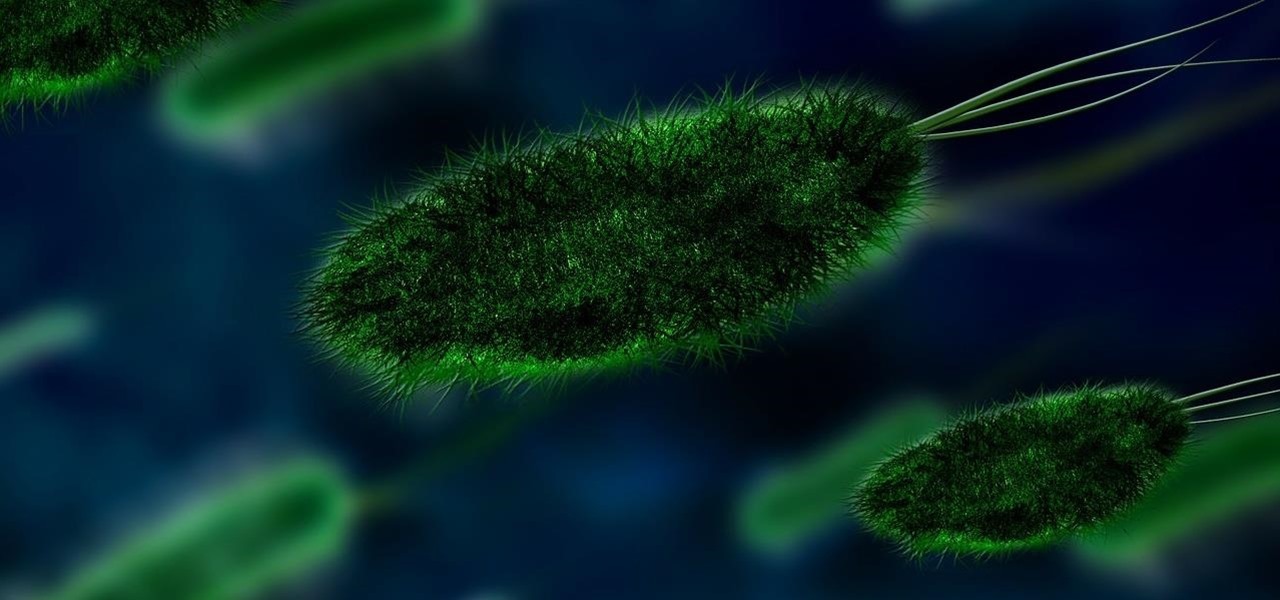New weapons are needed to combat antibiotic-resistant bacteria. Instead of drugs, scientists have discovered in an animal study that they may be able to harness vampire bacteria to vanquish pneumonia.
Microbes, good and bad, predate and outnumber us. Humans will never "win" a war on microbes. While the discovery of penicillin ushered in an antibiotic age in which humans had the upper hand, that upper hand hasn't lasted. Bacteria multiply so quickly they've evolved so that drugs we use are no longer effective against them.
According to the Centers for Disease Control and Prevention (CDC), about two million people each year suffer infections caused by antibiotic-resistant bacteria, and more than 20,000 die as a result. Some infections are resistant to all of the different antibiotics we use, even the "last line of defense" ones, which means we have no way to stopping them from killing us.
Superbugs Are Coming
We may forget, but infections can be very deadly. According to data from the CDC, in 1900, the top three causes of death were pneumonia, tuberculosis, and diarrhea and enteritis. In 1997, they were heart disease, cancer, and stroke, with pneumonia and influenza coming in at number six. While this could be related to increasing risks for these diseases, it's no longer true that infections are the leading causes of death in the US.
In 1928, Alexander Fleming discovered penicillin, which was called a "miracle drug." For his effort, he won the Nobel prize. In his acceptance speech in 1945, Fleming wisely cautioned against our current superbug problem, when he said:
The time may come when penicillin can be bought by anyone in the shops. Then there is the danger that the ignorant man may easily under-dose himself and by exposing his microbes to non-lethal quantities of the drug, make them resistant.
In early December of this year, the challenge of antibiotic resistance passed a new milestone that could mean coming resistance to Carbapenems, a vital "last-ditch" category of drugs used against multi-drug resistant infections. Carbapenem-resistant Enterobacteriaceae, a "nightmare bacteria," showed up in samples taken from a pig farm.
Samples of this specific superbug have been found before in the agricultural industry, but this case is exceptional because the new sample has the resistance gene in a plasmid, a bit of genetic material that's separate from the bacteria's main genome and can be transferred to other bacteria, spreading the resistance much more easily.
While carbapenems are not used for agricultural purposes in the US, the farm in question administers a chemically-related antibiotic to all its piglets, regardless of whether they are ill. This gives bacteria opportunity to develop resistance to critically important group of drugs used to treat humans and potentially pass the trait far and wide.
Turning Bacteria Against Their Own
The adaptability of microbes to overcome new antibiotics is well known. While new classes of antimicrobials are in development, some researchers are developing different mechanisms that are immune to resistance to treat bacterial infections.
For example, a collaborative research group at the Rutgers New Jersey Medical School and School of Dental Medicine is turning predatory bacteria into infection killers. Their research was published in December in the journal mBio. As the name implies, predatory bacteria attack other bacteria to gain nutrients needed to live and multiply. Just like animal predators, bacteria predators feed off specific other bacterial groups.
Two forms of predatory bacteria include Bdellovibrio bacteriovorus and Micavibrio aeruginosavorus. These bacteria approach their victims in different ways. B. bacteiovorus secretes enzymes that dissolve their bacterial victims' cell walls, allowing the predator to, as the paper says, "digest... the prey cell from within." M. aeruginosavorus, like a vampire, attaches to the bacteria and sucks out and digests the fluids of its victim.
Because these two types of bacteria do not naturally prey on mammalian cells, the researchers hypothesized that they could be useful in selectively rooting out bacteria that cause dangerous infections. They trained the bacteria to attack Klebsiella pneumoniae, a destructive respiratory bacteria in their research. Here is how it worked:
- The lungs of rats infected with K. pneumoniae were treated with several doses of predatory bacteria and observed over time.
- No abnormal or adverse impacts from the predatory bacteria were observed in the rats, and the bacteria stayed largely in the area of the lungs, where the pneumoniae infection thrives.
- Testing revealed the predatory bacteria cleared about 99% of the pneumonia bacteria from the lungs of the rats.
- The immune reaction of the rats was likely heightened by the presence of the predatory bacteria, a factor that may have actually been beneficial and boosted the rats' ability to fight off the pneumonia infection.
- After killing off the K. pneumoniae , scientists believe the rats' immune system ultimately also killed off the predatory bacteria.
Importantly, the double-bacterial infection didn't seem to cause tissue or inflammatory damage in the lungs. Lead author of the study, Daniel Kadouri, associate professor of microbiology at Rutgers School of Dental Medicine, said in a press release:
There were no adverse effects on the animal. There was no type of histological tissue damage or signs of sustainable inflammation... They were perfectly healthy.
In their research paper, the study authors note the result is a first for demonstrating the capability of predatory bacteria in a mammalian system to reduce the bacteria load of a serious human pathogen. That said, it is an exploratory study with limitations to its applications that call for further investigation of this promising treatment of drug resistant infections.
This study adds to other work in the field looking for alternative methods other than antibiotic drugs as a first-line of defense against dangerous microbial pathogens.
Just updated your iPhone? You'll find new emoji, enhanced security, podcast transcripts, Apple Cash virtual numbers, and other useful features. There are even new additions hidden within Safari. Find out what's new and changed on your iPhone with the iOS 17.4 update.



























Be the First to Comment
Share Your Thoughts